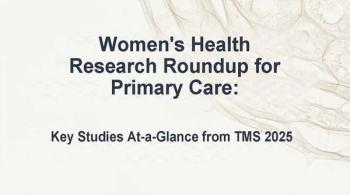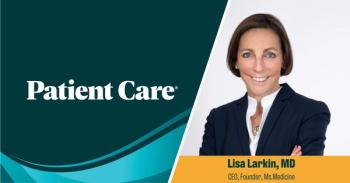
Provider Specialty and Type Drive Divergent Prescribing Patterns for Symptoms of Menopause
TMS 2025: Wide variability in practice patterns suggests a need for standardized education across both specialties and provider types to ensure consistent quality of care.
Provider specialty and type significantly influence treatment patterns for women seeking
Midwives and nurse practitioners prescribed systemic estrogen at higher rates than attending physicians, revealing substantial practice variation across a large academic healthcare system. The findings are being presented at the 2025 Annual Meeting of
Menopause symptoms affect up to 80% of women, yet menopausal hormone therapy (MHT) utilization has declined precipitously. According to a recent study, only 3.8% of women aged 45–59 years used MHT in 2023. Researchers led by Anna Caroline Cochrane, MD, assistant professor, general obstetrics and gynecology, Wake Forest University School of Medicine in Winston-Salem, NC, hypothesized that the lack of standardized provider education for menopause management may contribute to this decline through inconsistent prescribing patterns.
The research team conducted a retrospective cohort study extracting clinical data from the electronic health records of a large academic healthcare system from January 1, 2016, through December 31, 2023. Cochrane et al identified women aged 40–55 years seeking care for menopause-related symptoms using ICD-10 codes from outpatient encounters with family medicine, internal medicine, endocrinology, or OB/Gyn providers, then extracted prescriptions associated with these diagnostic codes.
Using multivariable logistic regression, the team evaluated associations between provider type and specialty with receipt of prescription treatment. Directed acyclic graphs determined which variables to include in models a priori. The minimally sufficient adjustment variables were diabetes, hypertension, and insurance status for provider specialty, and insurance status and provider specialty for provider type.
Findings
The analysis included 5,491 women with menopause-related outpatient visits. OB/Gyn providers saw 64.4% of patients, internal medicine 17.6%, family medicine 12.4%, and endocrinology 4.5%. Only 17.1% of women with menopause-related encounters received pharmacologic treatment for their symptoms.
Among those receiving treatment, vaginal estrogen was most commonly prescribed (47%), followed by systemic estrogen (34%) and selective serotonin reuptake inhibitors (SSRIs) (16%).
Specialty Shapes Treatment Selection
Participants were most likely to receive systemic estrogen when seen by OB/Gyns (P <.01). Compared with OB/Gyn, internal medicine clinicians prescribed systemic estrogen at close to just half the rate (OR 0.43, 95% CI, 0.29-0.64), as did family medicine practitioners (OR 0.50, 95% CI, 0.33-0.76). The lowest rates of prescribing of systemic estrogen were seen among endocrinologists (OR 0.16, 95% CI, 0.05-0.52).
The pattern reversed for SSRI prescriptions. Patients seeing Internal Medicine providers received SSRIs more frequently than those seeing OB/Gyn (OR 1.89, 95% CI: 0.24, 2.87), while Family Medicine showed even higher SSRI prescribing rates relative to OB/Gyn (OR 2.66, 95% CI: 1.77, 3.99).
Provider Type Influences Prescribing Patterns
When Cochrane and colleagues examined provider type, advanced practice clinicians prescribed systemic estrogen more frequently than attending physicians. Of note, midwives prescribed systemic estrogen at more than double the rate of attending physicians (OR 2.32, 95% CI, 1.42-3.77), while rates among nurse practitioners were similarly high (OR 1.88, 95% CI, 1.43-2.48).
For SSRIs, physician assistants (OR 2.60, 95% CI: 1.70, 3.97), nurse practitioners (OR 2.99, 95% CI: 1.95, 4.60), and residents (OR 2.10, 95% CI: 1.06, 4.20) all prescribed the antidepressants more frequently than attending physicians.
The authors note that attending physicians' lower prescribing rates for both systemic estrogen and SSRIs may reflect practice logistics at an academic medical center. They emphasize that their study highlights the need for standardized education on menopause care for all provider types and specialties to improve the quality of care provided to patients.
"Menopause is finally gaining traction in mainstream media, which is rightfully empowering our patients who suffer from menopause symptoms to come to us for help," Cochrane said in a statement. "Unfortunately, menopause is a topic that is often only minimally covered during our training, with less than 10% of residents in internal medicine, family medicine, and OB/Gyn feeling prepared to manage menopause after graduation."
The result, she added, translates into highly variable care for women during a vulnerable life passage. "We need to do a better job preparing our providers with the evidence behind treatment options so our patients can get the care they need."
Newsletter
Enhance your clinical practice with the Patient Care newsletter, offering the latest evidence-based guidelines, diagnostic insights, and treatment strategies for primary care physicians.

















































































































































































































































































